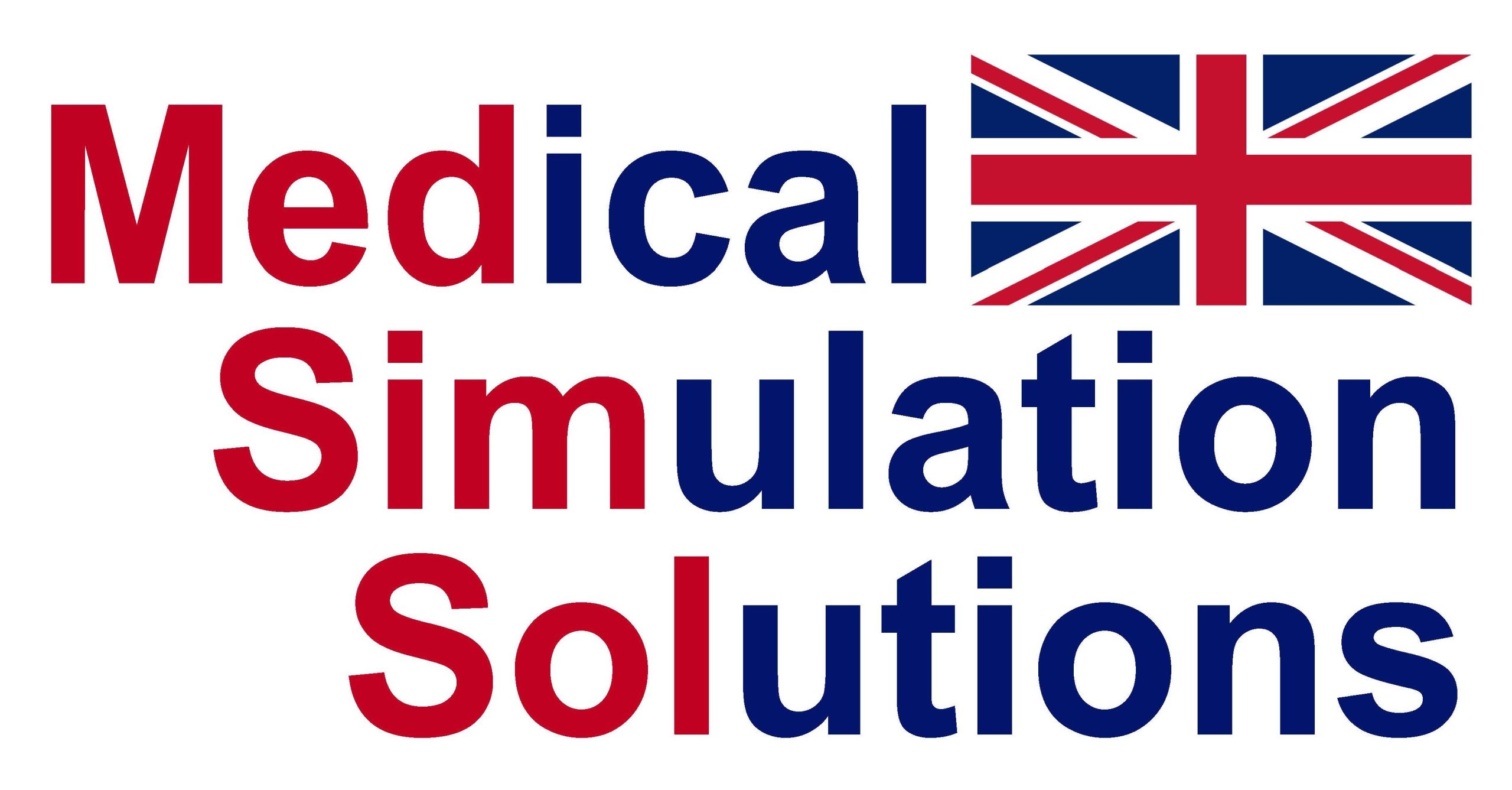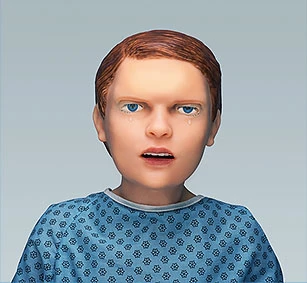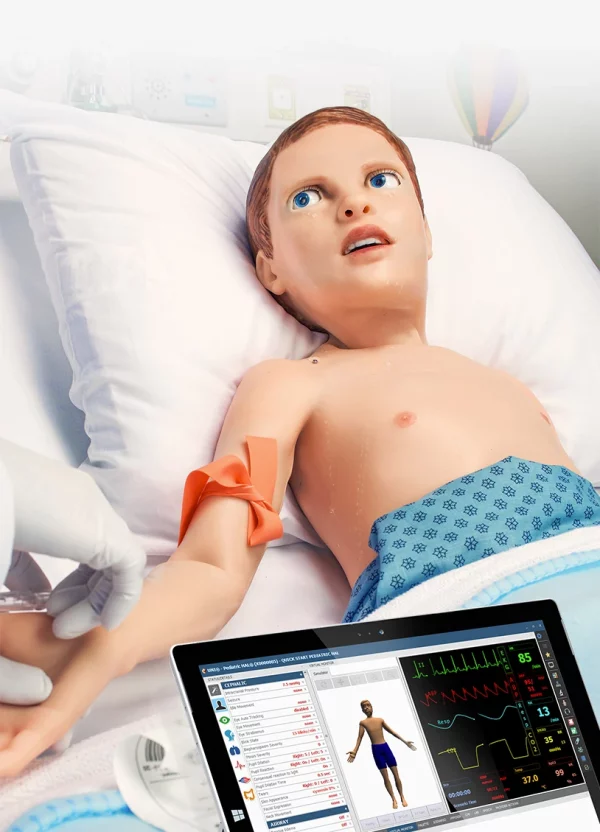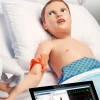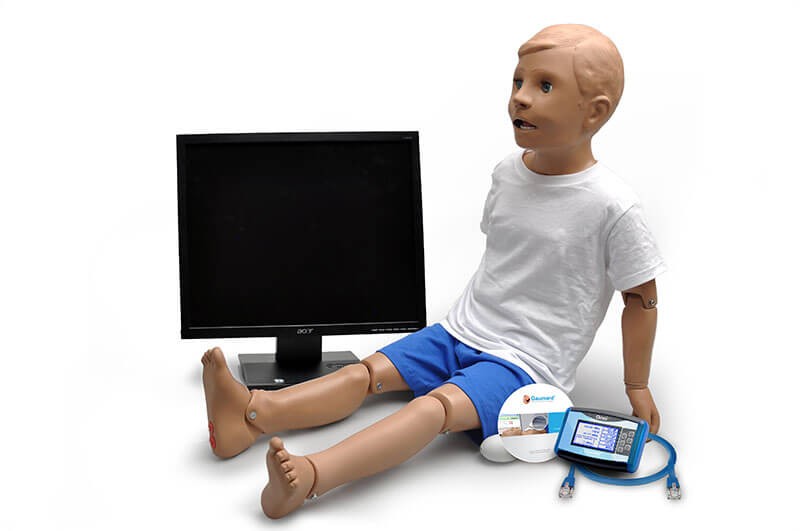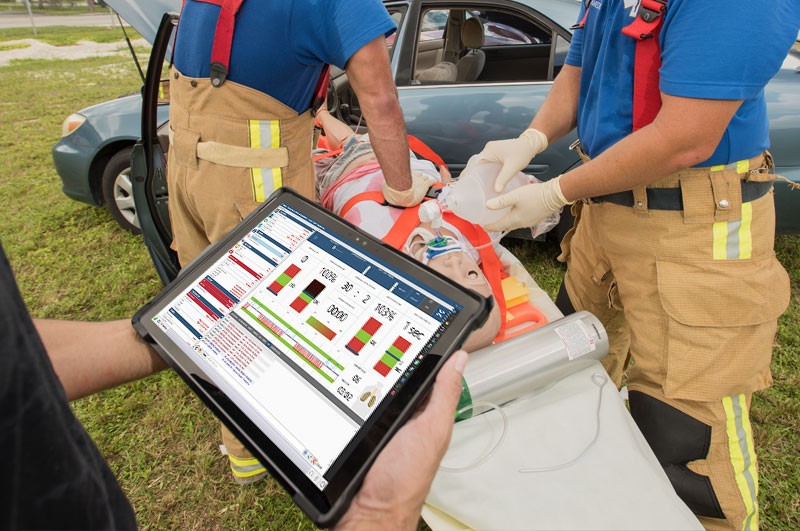Description
PRODUCT FEATURES
General
• Height: 44 inches or 111 cm
• Tetherless and wireless; fully responsive during transport
• The internal rechargeable battery provides hours of tetherless operation
• Smooth and supple full-body skin with seamless trunk and limb joints
• Realistic joint articulation: neck, shoulder, elbow, hip, and knee
• Palpable bony landmarks
• Forearm pronation and supination
• Supports common patient positions including Fowler’s, supine, and sitting
• Male/female patient conversion
• Tablet PC preloaded with UNI® included
• OMNI®2 ready
• Includes 10 preprogrammed SLEs and facilitator’s guidebook
Breathing
• Spontaneous breathing and selectable normal and abnormal respiratory patterns
• Variable respiratory rates and inspiratory/expiratory ratios
• Programmable unilateral chest rise and fall
• Unilateral chest rise with right mainstem intubation
• Real CO2 exhalation: supports etCO2 monitoring using real sensors and monitoring devices
• Selectable normal and abnormal sounds: upper right front and back, upper left front and back, lower right back, and lower left back
• Mechanical ventilation support: ◦ AVC, SIMV, CPAP, PCV, PSV, and more
◦ Supports therapeutic levels of PEEP
◦ Programmable variable lung compliance
◦ Variable bronchi resistance
◦ Programmable respiratory efforts for weaning/liberation
• Real-time ventilation feedback
• Visible chest rise during BVM ventilation
• Chest tube insertion: left midaxillary haemothorax site features palpable bony landmarks, realistic skin for cutting and suturing, tactile pleural pop, and fluid drain
• Needle decompression site features realistic tactile feedback and audible hiss
• Needle decompression and chest tube insertion detection and logging
Airway
• Anatomically accurate oral cavity and airway
• Supports nasotracheal/orotracheal intubation with standard instruments including endotracheal tubes and supraglottic airway devices
• Tracheal intubation detection
• Head tilt, chin lift, jaw thrust
• Supports esophageal intubation
• NG/OG tube placement
• Supports bag-valvemask ventilation
• Realistic surgical trachea permits tracheostomy, cricothyrotomy, and retrograde intubation
• Programmable difficult airway: laryngospasm and tongue edema
• Selectable normal and abnormal upper airway sounds
Circulatory
• Visible cyanosis, redness, pallor, and jaundice
• Supports capillary refill time testing above the right knee; test detection and logging
• Palpable pulses: bilateral carotid, brachial, radial, and femoral
• Blood pressure dependent pulses
• Supports blood pressure monitoring using a real NIBP cuff and monitor
• SpO₂ monitoring using real devices
Cardiac
• Includes comprehensive library of ECG rhythms with customizable beat variations
• Independent normal/abnormal heart sounds at aortic, pulmonic, and mitral sites
• Supports ECG monitoring using real devices
• Supports ECG-derived respiration monitoring (EDR)
• eCPR™ Real-time quality feedback and reporting ◦ Time to CPR
◦ Compression depth/rate
◦ Compression interruptions
◦ Ventilation rate
◦ Excessive ventilation
◦ Smart CPR voice coach
• Effective chest compressions generate palpable femoral pulses
• Defibrillate, cardiovert, and pace using real devices and energy
• Anterior/posterior defibrillation sites
• Supports double sequential external defibrillation (DSED) up to 150 Joules
Neurologic
• Active robotics simulate lifelike facial expressions including: ◦ Anger
◦ Transient pain
◦ Ongoing pain
◦ Amazement
◦ Quizzical
◦ Crying
◦ Yawning
• Preprogrammed emotional states automatically express associated verbal and non-verbal cues without manual input ◦ Worried
◦ Anxious
◦ Lethargic
◦ Distracted
• Create custom facial expressions via UNI® interface
• Programmable jaw movement, bilateral or unilateral brow movement, and horizontal neck rotation
• Automatically turns head and eyes towards the approaching subject
• Stiff neck (torticollis)
• Interactive eyes: eyes can automatically follow a moving object
• Programmable blinking rate,pupil response, and bilateral and unilateral eye movement
• Independent, active pupillary light reflex
• Abnormal eye and eyelid movements: cross-eyed, nystagmus, eyelid twitching, eyelid droop
• Programmable crying/tears release real fluid
• Wireless streaming voice: be the voice of HAL and listen to participants respond in real-time
• Real-time voice modulation effects
• Automatic jaw movement synchronized with speech
• Seizures with selectable intensity levels
• 50+ prerecorded speech responses
Vascular Access
• Bilateral forearm IV access supports sampling and continuous infusion
• Intraosseous infusion site at right proximal tibia
• Real glucose test readings via finger-stick
Gastrointestinal
• Patent esophagus
• Gastric distension during excessive PPV
• Bowel sounds in four quadrants
• Interchangeable male/female genitalia
• Supports urinary catheterization with fluid return
• Programmable urinary output
